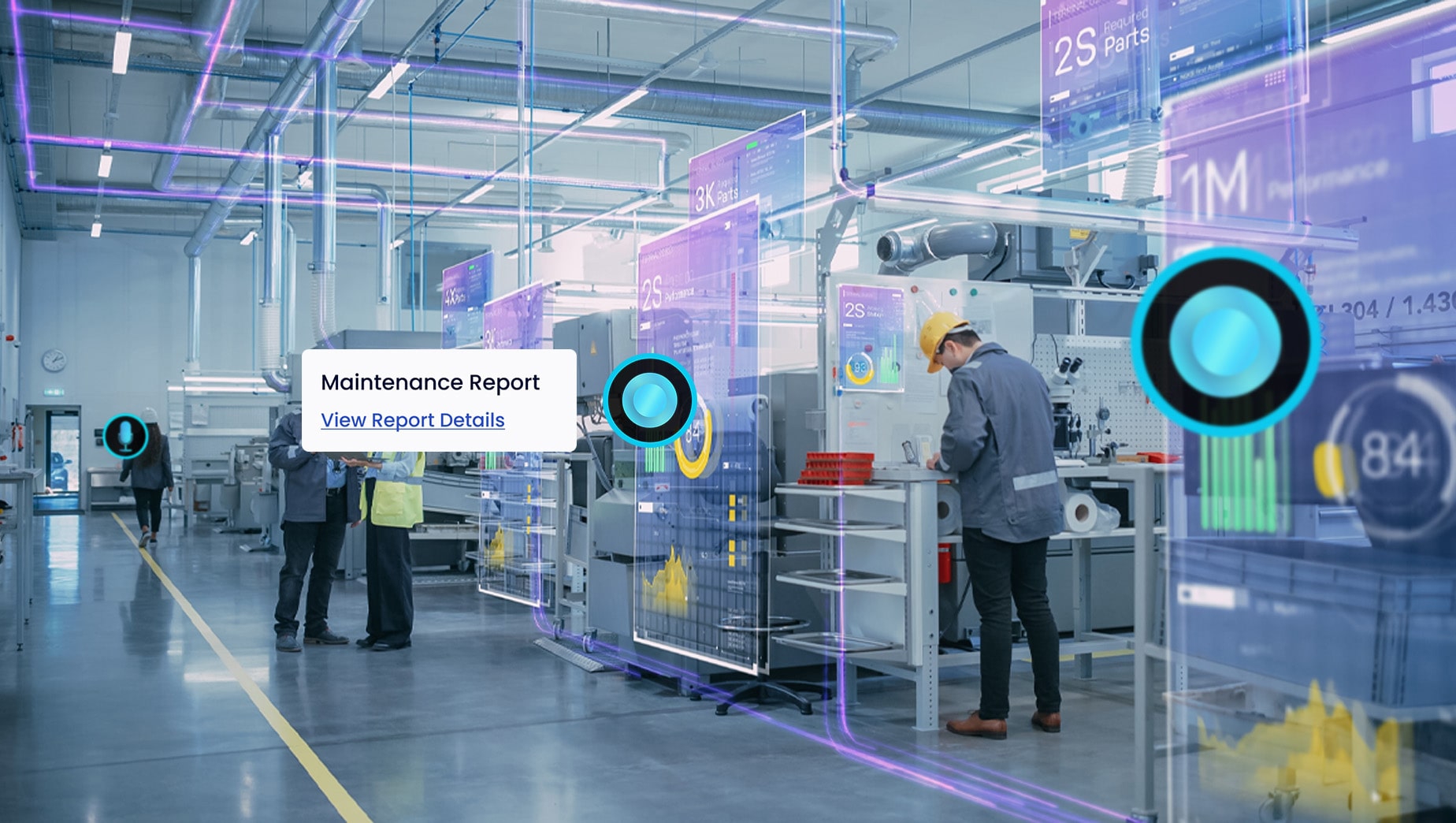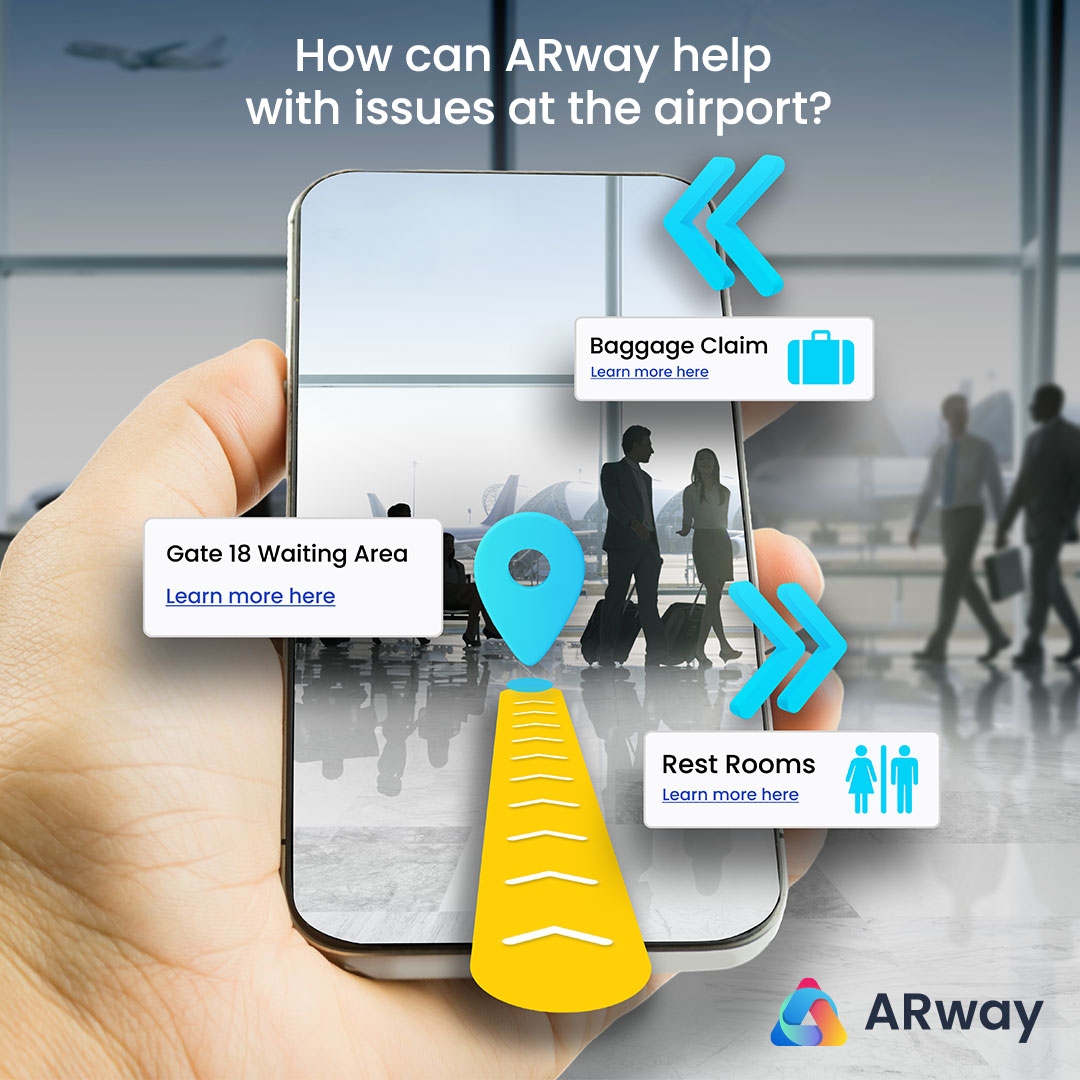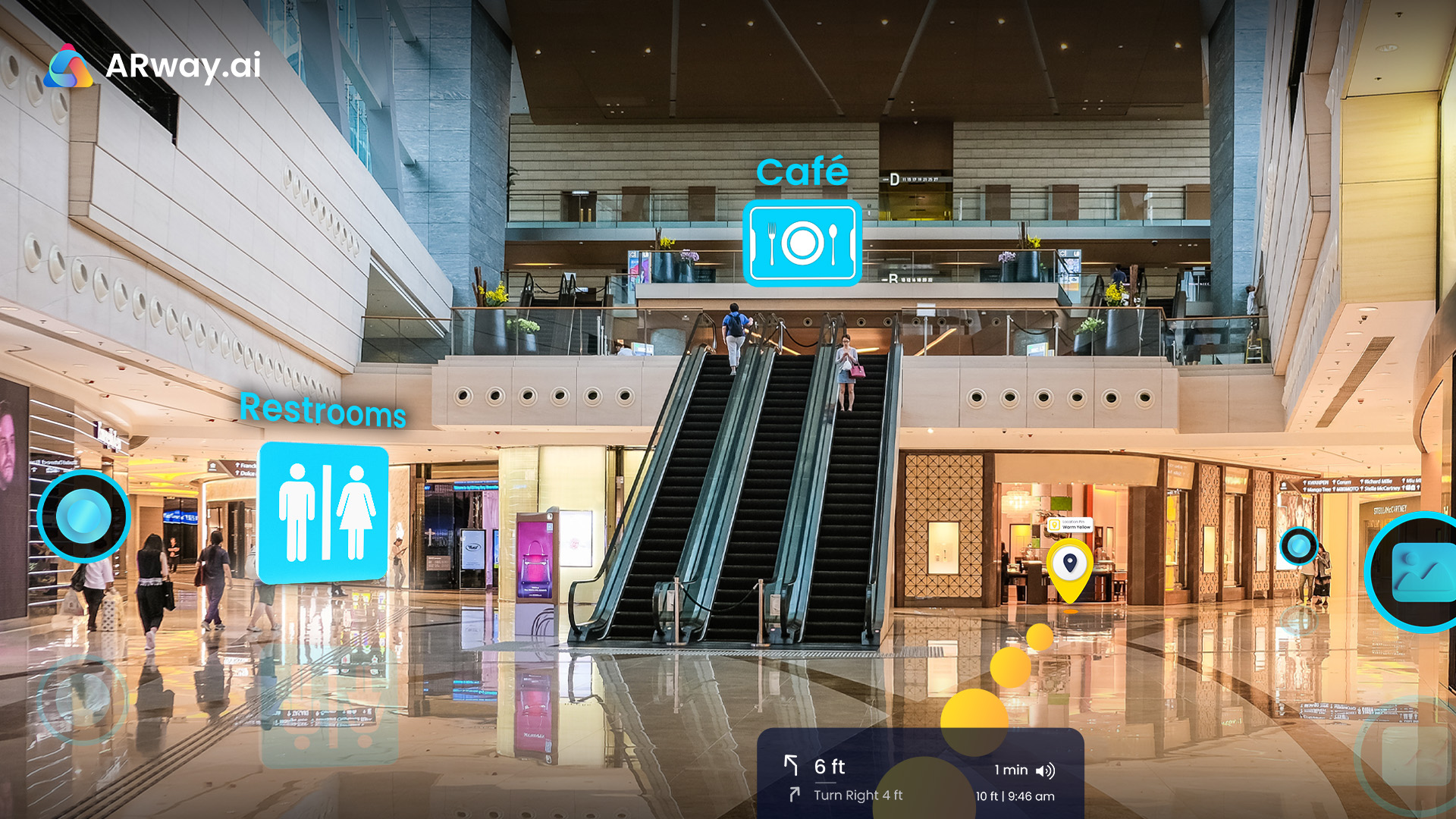MetaMaps: Improving Navigation of Complex Spaces with AR-Enhanced Indoor Wayfinding
We’re no strangers to relying on signage to arrive at our desired destination, especially when navigating large and crowded areas. It’s meant to make the journey seamless and hassle-free, yet we still all find ourselves getting lost from time to time. After all, that’s why we tend to get to places early to account for any mishaps and most importantly, to avoid that extra and unnecessary stress.
So, why are people still getting lost? It’s clear the style of conventional wayfinding we’re used to isn’t cutting it anymore. Continue reading to learn how Augmented Reality (AR) is the cornerstone of the next step for indoor navigation and wayfinding.
What is Augmented Reality Wayfinding?
The main issue with 2D maps is that they’re simply not reactive enough and there’s no clear direction on how to reach objects or destinations far away. Recent studies have shown that one of the biggest retail customer pain points is navigation, as 61% of customers reported navigating in large spaces as one of the key frustrations.
AR wayfinding is the ideal solution to the fact that indoor spaces are a lot more complex than outdoor spaces. Customers are not necessarily looking for more assistance but better assistance – AR is here to lead us to our destination faster than ever before.
Augmented Reality for Indoor Wayfinding
Augmented reality wayfinding essentially functions as a digital guide. Through a mobile device, users see digital information laid over their real-world environment in real time. An AR wayfinding app can show directional prompts to get people to the opposite side of a building if that’s where they need to go – no matter how packed it is. And with over three-fourths of smartphone owners already regularly using navigation apps, this type of technology is nothing new.
People can then navigate their way around complex indoor spaces, from healthcare facilities, universities, shopping centers, airports, stadiums, and more with ease! Not only will it be easier, but it’s proven to be much faster as AR navigation is 2x faster than 2D navigation using signage.
How Does AR-Based Indoor Navigation Work?
To get to the stage of providing a display of AR directions, first comes the actual navigation and localization of the user within the map so that the system understands the location.
This is where you would expect GPS and other typical outdoor technologies to work, but they don’t translate as well when indoors. A different approach and one of the most common ways is to install beacons like the Gatwick airport has done. With over 2,000 beacons installed, it acts as the base for their indoor navigation system and allows travelers to locate themselves to find their gates, exits, information centers, and more.
From there, AR technology is incorporated and provides directions on a smartphone screen on top of the real-world environment. Arrows, text boxes, and paths light a user’s device to make the navigation process incredibly simple and efficient – so efficient to the point where studies of AR maps versus 2D maps have shown it takes nearly double the time to navigate when using the 2D physical map.
Not every business has the budget behind an airport, so installing thousands of beacons isn’t a viable option. This is where AR Way comes in, with their elegantly simple indoor wayfinding solution that allows anyone to map out any space and populate it with content without writing a single line of code, and without the need for beacons, Wi-Fi, or external hardware. By simply scanning a location, businesses can create a point-cloud map via mobile app. A navigation path, 3D models, and other content can then be anchored to the physical environment and viewed through the app. The result is a seamless and hyper-accurate outdoor-indoor AR navigation enhanced with content along the path.
Where Can AR Wayfinding Technology Be Used?
Retail
AR in-store navigation can enhance the shopping experience by empowering customers to search and learn more about products. One of the biggest pain points for 64% of brick-and-mortar retail customers is the limited amount of product information available to them. Through an AR-enabled app, customers can click and learn about products they’re interested in.
AR wayfinding has been proven to lead to a 41% increase in foot traffic in a shopping mall, which translated into measurable sales growth in 4 out of 5 stores. Businesses can impact customers at the right time when they are in the range of their store and offer coupons to encourage more visits.

AR Wayfinding and spatial activations in a shopping mall
Museums and Galleries
The goal behind featuring artworks at museums and galleries is to have visitors feel connected to the pieces. According to a Seattle Art Museum (SAM) survey, many participants report wanting to learn more about exhibits, but not having sufficient information available to them. By featuring audio recordings, curator commentary, timelines, photographs, and more through the app, visitors foster not only a deeper understanding but are also more engaged. According to the study, 84% feel more engaged & find an experience more memorable if it has AR elements.

AR MetaTour and spatial activations in an art gallery
Hospitals
Hospital visitors are typically already stressed due to the nature of their visit, so AR-enhanced navigation is a simple way to take stress off patients and guide them to their appointment destination. If patients don’t have access to AR-navigation, the next logical step is to ask employees, leading to medical staff spending an average of 4,500 hours giving directions every year, which is equivalent to two full-time employees.

AR Wayfinding and spatial activations in a hospital
Stadiums
Attending a concert or event is a fun, memorable experience. What isn’t fun is when visitors can’t find a restroom or miss a key moment because they’re stuck in a concession line. AR wayfinding can display the shortest lines or specific vendors and merchandise to offer a seamless experience.
It’s not only a boosted visitor experience but a plus for business owners as well, as they highlight sponsorship opportunities and concessions, and offer coupons for merchandise revenue.

AR MetaTour and spatial activation in a stadium
How Can Augmented Reality Wayfinding Help You?
The bottom line behind AR wayfinding and navigation is that it will enhance your visitor’s overall experience, whether it’s a large, complex airport or a small brick-and-mortar store.
A hardware-free MetaMap has the potential to offer savings of up to $33,000 when eliminating the need to provide maintenance and repairs on physical wayfinding signage while staff are free to work and productivity rises as customers get to their destination with zero help.
AR is here to enhance our physical environment with visual, textual, and audio through our fingertips. Is your business ready to use AR to enable your customers to find products and services faster? Contact us to learn more about how AR Wayfinding can transform your visitors’ experience.







